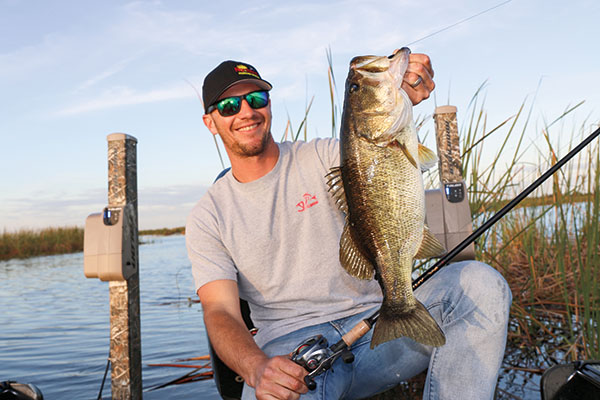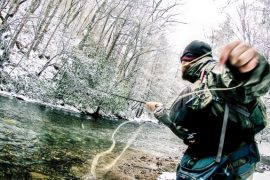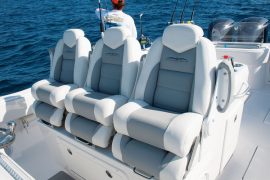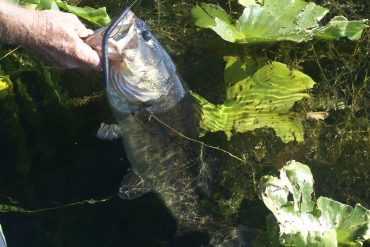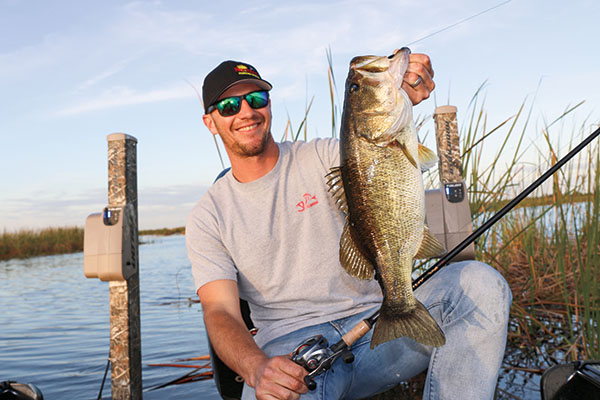
Growing up in Ontario, near the shores of Lake of the Woods, has been a blessing. My father and grandpa got me on the water at a young age. By age-10, I was running a 14-foot Lund with a 25-hp motor, learning how to find and catch fish, bass mostly, but whatever would bite.
That region hosts top-level team tournaments, so ever since I was a teenager my passion has been to compete in as many events as possible, while doing some guiding on the side.
Tournament fishing has been a big part of my life, with most competitions on big waters like Lake of the Woods and Rainy Lake.
In 2012, thanks to generous sponsor support, I was able to compete in the FLW Tour Opens, four events that took place in Florida, Michigan, Alabama, and Texas. Jumping straight into fishing at the pro level isn’t the normal route for most anglers. I had no experience fishing in any BFL or AAA events as they were not readily available.
Things went well that first year and I was fortunate to cash a check at each event. My success in the Opens qualified me for the FLW Tour so I jumped right in for the 2013 season to fish against some of the best bass anglers in the world. My results over the first few years on the Tour were mixed. The competition on the FLW Tour is stiff and I was unfamiliar with almost all the locations. I cashed checks at about half of the events and each year was one or two poor finishes from qualifying for the Forrest Wood Cup. 2016 was my break-out year. I finished in the money at all six regular-season events and ended up 5th in the Angler of the Year points race, which qualified me for my first Forrest Wood Cup.
Looking back on that season, a few factors for success stuck out. Like most anglers, I don’t like getting my butt kicked so each time it’s happened, I’ve learned from it, rather than erasing the whole bad memory. The process of preparing and prefishing for these events has gotten easier and my network of buddies that I travel and stay with has been helpful.
At this level of competition, most anglers have the mechanical skills and know the types of presentations they should be using at each location, so finding fish and putting a pattern together is the most important element to success. We have three days to practice on an unfamiliar body of water, so being efficient at finding fish is what separates the best anglers from the rest.
Seasonal Factors
Knowing the seasonal movements of bass on diverse waters across the continent is the first step in deciding where to start your search on a new body of water. Most pro tournaments are held during the winter or spring so we’re typically facing some phase of the spawning process. I’ve learned to study elements like water temperature, seasonal progression, and weather trends and combine them with visual scouting for beds to indicate where we’re at in the process.
Once I have an idea of where to look for bass, I focus on factors like the forage options in that body of water and the depth bass may be in, when selecting lure options. The Internet offers a wealth of information about water levels, moon factors, and other weather effects, as well as past tournament results. These provide an idea of the size of bass typical of events at that time of year, as well as top lure selections and productive parts of a waterbody. Regionally, you can learn of locally effective lures, such as bucktail “Preacher Jigs” on the Tennessee River lakes in summer, top tube jig colors for Lake…

